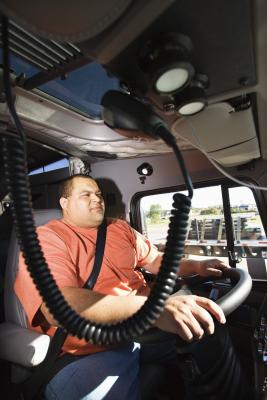
Because of the highly demanding conditions under which some commercial vehicles are operated, drivers must adhere to strict physical requirements in order to gain and maintain their commercial licenses. In addition to the health and physical requirements, a driver’s vision must meet certain criteria to ensure both the driver’s safety and that of his passengers, as well as other drivers and passengers on the road.
The Snellen test, which is more commonly known as a doctor’s eye chart or vision chart, measures a driver’s ability to see clearly at the same distance from which a person with average vision sees clearly. A person with 20/20 vision can distinguish the same size text at a distance of 20 feet as average people. In order to obtain a commercial driver's license, a driver must have 20/40 vision, which means that she can read text from 20 feet away that the average person can read at 40 feet away. If the driver’s vision does not meet this requirement, glasses or contact lenses may be used to achieve this Snellen score.
In order to operate commercial vehicles, a driver’s field of vision must extend at least 70 degrees to each side. This is necessary to view and accommodate for other drivers and obstacles during operation of the commercial vehicle. If the driver’s field of view does not extend at least 70 degrees, or if the driver suffers from a visual impairment such as tunnel vision, then he can not obtain a CDL.
Acute color blindness will also disqualify a potential commercial driver. The driver must be able to distinguish between red, green and amber traffic signals to meet the CDL requirements.